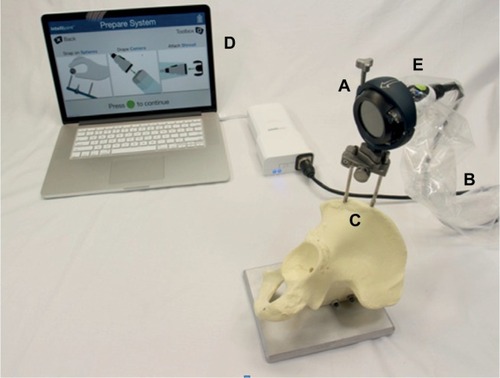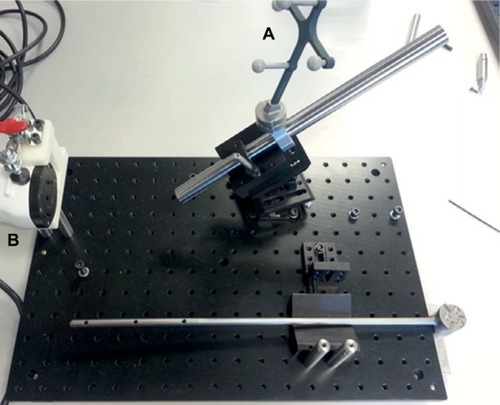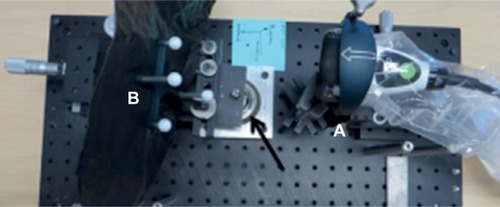Figures & data
Figure 1 The Intellijoint HIP 3D mini-optical navigation tool.

Figure 2 The Intellijoint HIP system.

Figure 3 Representative images of the workstation screen indicating data provided to surgeons in real time.

Figure 4 The acetabular benchtop phantom.

Figure 5 Benchtop phantom configured for leg length and offset testing.

Table 1 Summary of the differences between the reference values and the values measured by the navigation tool
